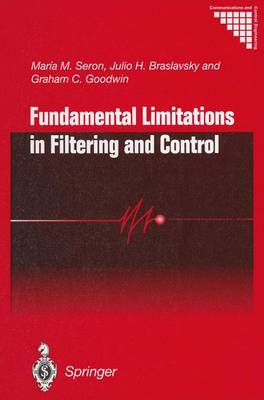Communications and Control Engineering
2 total works
Fundamental Limitations in Filtering and Control
by Maria M. Seron, Julio H. Braslavsky, and Graham C. Goodwin
Constrained Control and Estimation
by Graham Goodwin, Maria M. Seron, and Jose A. de Dona
Recent developments in constrained control and estimation have created a need for this comprehensive introduction to the underlying fundamental principles. These advances have significantly broadened the realm of application of constrained control.
- Using the principal tools of prediction and optimisation, examples of how to deal with constraints are given, placing emphasis on model predictive control.
- New results combine a number of methods in a unique way, enabling you to build on your background in estimation theory, linear control, stability theory and state-space methods.
- Companion web site, continually updated by the authors.
Easy to read and at the same time containing a high level of technical detail, this self-contained, new approach to methods for constrained control in design will give you a full understanding of the subject.

